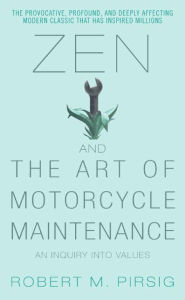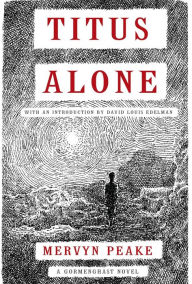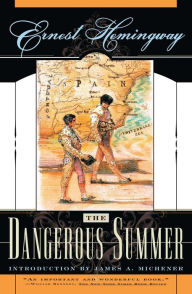5 Books Written by Authors in the Grip of Mental Illness
The joke that all writers are crazy for choosing a profession with so little glamour or guaranteed return on investment is an old one, but it’s not that funny when you consider how many writers actually did or do suffer from mental disorders, from depression to something more complex. Anyone struggling with mental health faces a huge challenge in their lives, which makes it all the more remarkable when a writer produces a lasting work of literature while battling their own demons. Though decidedly less than stable, these five writers managed to write enduring books.
Zen and the Art of Motorcycle Maintenance: An Inquiry into Values
Zen and the Art of Motorcycle Maintenance: An Inquiry into Values
Paperback $7.99
Zen and the Art of Motorcycle Maintenance, by Robert M. Pirsig
Clinically depressed and diagnosed with paranoid schizophrenia at a young age, Pirsig had several mental breakdowns over the course of his life and was in treatment almost continuously. Whether or not this compromises the value of his Metaphysics of Quality laid out and explored in seminal book Zen and the Art of Motorcycle Maintenance is up to the reader.
Zen and the Art of Motorcycle Maintenance, by Robert M. Pirsig
Clinically depressed and diagnosed with paranoid schizophrenia at a young age, Pirsig had several mental breakdowns over the course of his life and was in treatment almost continuously. Whether or not this compromises the value of his Metaphysics of Quality laid out and explored in seminal book Zen and the Art of Motorcycle Maintenance is up to the reader.
Titus Alone
Titus Alone
By Mervyn Peake
Paperback
$11.21
$15.95
Titus Alone, by Mervyn Peake
Peake was never a well man, and suffered mental and physical setbacks throughout his life. In the late 1950s the failure of a play he wrote sent Peake into a steep decline, and while he worked on the third novel in his Gormenghast series, Titus Alone, he was suffering from dementia due to a condition closely related to Parkinson’s disease, making his mental decline quite pronounced. The scattered and unfocused nature of the novel was exacerbated in editing; the term “heavy-handed” is probably not strong enough to describe what was done to the manuscript. Later editions hewed more closely to Peake’s original text.
Titus Alone, by Mervyn Peake
Peake was never a well man, and suffered mental and physical setbacks throughout his life. In the late 1950s the failure of a play he wrote sent Peake into a steep decline, and while he worked on the third novel in his Gormenghast series, Titus Alone, he was suffering from dementia due to a condition closely related to Parkinson’s disease, making his mental decline quite pronounced. The scattered and unfocused nature of the novel was exacerbated in editing; the term “heavy-handed” is probably not strong enough to describe what was done to the manuscript. Later editions hewed more closely to Peake’s original text.
$16.15
$17.95
$16.15
$17.95
Save Me the Waltz, by Zelda Fitzgerald
Zelda Fitzgerald is a tragic figure, a classic example a person with “high spirits” secretly suffering from a severe mental disorder. When she was finally diagnosed with schizophrenia in the early 1930s, she spent time at a clinic, where she experienced a rush of creativity and wrote Save Me the Waltz as part of her therapy. Her husband, F. Scott Fitzgerald, wasn’t pleased with it because it covered much of the same semi-autobiographical material as the novel he was working on (which would eventually become Tender is the Night), and he forced Zelda to revise the book extensively before he would allow her to publish. The failure of the book and the mean-spirited reaction from her husband left Zelda crushed; she didn’t return to writing until after Scott’s death, and was working on a book when she died tragically in a fire at her hospital.
Save Me the Waltz, by Zelda Fitzgerald
Zelda Fitzgerald is a tragic figure, a classic example a person with “high spirits” secretly suffering from a severe mental disorder. When she was finally diagnosed with schizophrenia in the early 1930s, she spent time at a clinic, where she experienced a rush of creativity and wrote Save Me the Waltz as part of her therapy. Her husband, F. Scott Fitzgerald, wasn’t pleased with it because it covered much of the same semi-autobiographical material as the novel he was working on (which would eventually become Tender is the Night), and he forced Zelda to revise the book extensively before he would allow her to publish. The failure of the book and the mean-spirited reaction from her husband left Zelda crushed; she didn’t return to writing until after Scott’s death, and was working on a book when she died tragically in a fire at her hospital.
The Exegesis of Philip K. Dick
The Exegesis of Philip K. Dick
By
Philip K. Dick
Editor
Pamela Jackson
,
Jonathan Lethem
Hardcover $40.00
The Exegesis of Philip K. Dick, by Philip K. Dick
Philip K. Dick was a genius, and one of the greatest science fiction writers in history. He was also a man who saw visions his whole life, who was frequently paranoid, and who was probably an undiagnosed schizophrenic. This all culminated in what Dick came to refer to as 2-3-74—February and March of 1974, when he came out of dental surgery to a stream of visions in which he was transported back in time to early Christian days in ancient Rome. He began working on Exegesis, compiling nearly 10,000 pages of handwritten notes before he died in 1982. Filled with sharp writing, philosophical tangents, and scientific speculation, Exegesis is fascinating, but almost certainly written by a man who had parted ways with his sanity.
The Exegesis of Philip K. Dick, by Philip K. Dick
Philip K. Dick was a genius, and one of the greatest science fiction writers in history. He was also a man who saw visions his whole life, who was frequently paranoid, and who was probably an undiagnosed schizophrenic. This all culminated in what Dick came to refer to as 2-3-74—February and March of 1974, when he came out of dental surgery to a stream of visions in which he was transported back in time to early Christian days in ancient Rome. He began working on Exegesis, compiling nearly 10,000 pages of handwritten notes before he died in 1982. Filled with sharp writing, philosophical tangents, and scientific speculation, Exegesis is fascinating, but almost certainly written by a man who had parted ways with his sanity.
The Dangerous Summer
The Dangerous Summer
By
Ernest Hemingway
Introduction
James A. Michener
Paperback
$15.20
$16.00
The Dangerous Summer, by Ernest Hemingway
By 1959, Hemingway was not the man he’d once been. Assigned by Life magazine to write a 1,000-word piece about bullfighting in Spain, he submitted a manuscript of 130,000 words and found himself unable to edit it down into something suitable for publication, turning to his friend A. E. Hotchner for help. Hotchner reported that Hemingway was “unusually hesitant, disorganized, and confused.” Shortly afterward, the author became visibly depressed, remaining in bed for days on end, and in 1960 voluntarily entered the Mayo Clinic for electroconvulsive therapy. A few months later, Hemingway killed himself, and 25 years after that, the novel-length version of his bullfighting story was published as The Dangerous Summer.
The Dangerous Summer, by Ernest Hemingway
By 1959, Hemingway was not the man he’d once been. Assigned by Life magazine to write a 1,000-word piece about bullfighting in Spain, he submitted a manuscript of 130,000 words and found himself unable to edit it down into something suitable for publication, turning to his friend A. E. Hotchner for help. Hotchner reported that Hemingway was “unusually hesitant, disorganized, and confused.” Shortly afterward, the author became visibly depressed, remaining in bed for days on end, and in 1960 voluntarily entered the Mayo Clinic for electroconvulsive therapy. A few months later, Hemingway killed himself, and 25 years after that, the novel-length version of his bullfighting story was published as The Dangerous Summer.



